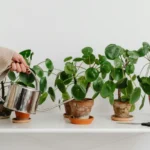LET"s Talk: info@greenaryleaf.com
Indoor plants bring life and color to any space, and as a plant lover myself, I know the joy of watching them grow and thrive. But sometimes, our leafy friends don’t get the sunlight they need indoors. Without enough light, plants can start showing signs that something’s wrong. Here, I’ll share how you can tell if your indoor plants need more light and what you can do to help them. Let’s dive into the details so you can keep your indoor garden lush and healthy!
1. Yellowing Leaves
One of the first and most obvious signs that your indoor plants need more light is yellowing leaves. While yellow leaves can also indicate overwatering or nutrient deficiencies, it’s often a signal that the plant isn’t getting enough sunlight. Photosynthesis is essential for plants, and without light, they can’t produce the chlorophyll that gives leaves their green color.
Tip: Check the location of your plant. If it’s tucked away in a dim corner or far from a window, this could be the reason for the yellowing.
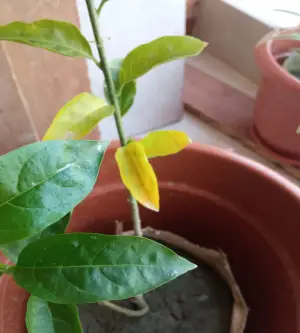
2. Leggy or Stretched Growth
If your plant seems to be “reaching” toward the light source or looks tall and spindly with wide spaces between leaves, this is a clear sign it’s not getting enough light. Plants naturally grow towards light, and when they don’t get enough, they will stretch in its direction, making them look leggy or elongated.
What to Do: Try moving the plant closer to a window or rotating it regularly so that all sides get some exposure to light.
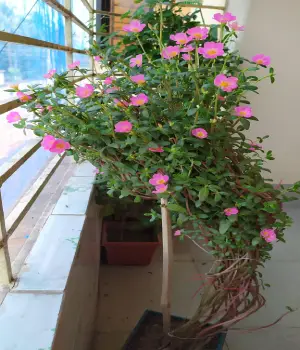
3. Smaller, Lighter Leaves
Indoor plants that don’t receive adequate light may also develop smaller and paler leaves. In some cases, the leaves might even lose their vibrant color. This can happen because the plant is conserving energy, as photosynthesis slows down in low-light conditions.
Pro Tip: If you see new leaves growing in smaller than usual, it’s time to consider moving the plant to a brighter spot.

4. Slowed or Stunted Growth
Healthy plants grow at a steady rate. However, when they aren’t getting enough light, growth can slow down considerably or even stop altogether. If you’ve noticed that your plant hasn’t produced new leaves or stems in a while, lack of light could be the culprit.
Quick Fix: Consider supplementing with a grow light if natural sunlight is limited in your space.
5. Fading Variegation
Variegated plants, like the variegated Monstera or Pothos, need more light than solid green plants to maintain their unique patterns. Without enough light, the variegated areas may begin to fade, turning a pale green. This happens because the plant reallocates its resources, prioritizing chlorophyll production over maintaining the variegation.
Solution: Place variegated plants in a spot with bright, indirect light to keep their colors vibrant.
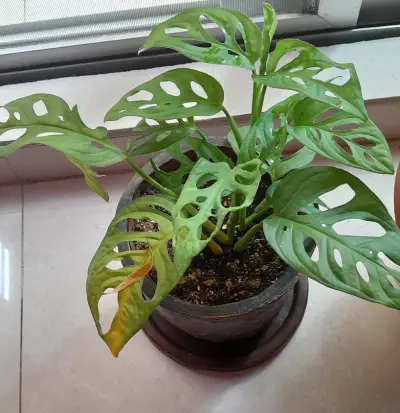
6. Dropping Leaves
While leaf drop can be due to various reasons, it’s often linked to insufficient light. When plants are starved of light, they might begin shedding leaves to reduce the energy they need to survive. You’ll typically see this with lower leaves, which are more shaded and receive the least light.
Action Plan: Moving the plant closer to natural light can reduce leaf drop. Consider adding grow lights if needed.
7. Moss and Mold Growth in Soil
In low light, plants also take longer to use up the water in their soil, which can lead to moss or mold growth on the soil surface. This happens because the water isn’t evaporating as it would in brighter light, creating a damp environment perfect for mold.
How to Fix: Reduce watering and improve airflow. Increase light exposure to help the soil dry out faster.

8. Plant Leaning Drastically to One Side
If your plant is leaning significantly to one side, it’s likely trying to reach toward the closest light source. This uneven growth often happens when plants are kept in low light areas for long periods.
Solution: Rotate your plant regularly, or place it in a brighter spot where it can grow more evenly.
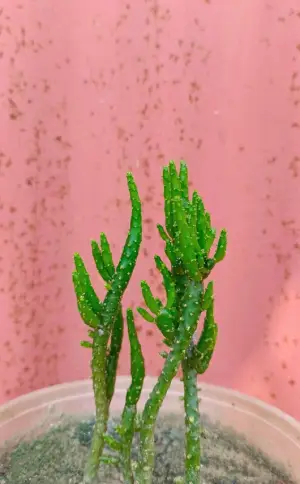
9. Dark and Damp Soil
Indoor plants in low light can have constantly moist soil because they aren’t using as much water for photosynthesis. If the soil feels damp even though you’ve cut back on watering, your plant might need more light to dry out properly between waterings.
Watering Tip: If you’re noticing this, try watering in a good way and placing the plant in a spot with better light.
10. No Flowering
For indoor plants that bloom, such as African violets or orchids, low light can be a major reason why flowers won’t appear. Without enough light, these plants will rarely, if ever, bloom indoors.
Recommendation: If you’re hoping to see flowers, place the plant in a brighter spot or add a grow light.
Final Talk
Observing these signs can make a world of difference for your indoor plants. Understanding what your plants need and how they communicate it helps keep your green friends thriving. Remember, each plant has its own light requirements, so learning about their specific needs can ensure they grow healthy and strong.
Common FAQ
If you notice signs like yellowing leaves, leggy growth, smaller and lighter leaves, or slowed growth, your plant might need more light. Plants often stretch toward light and can become spindly or pale if they’re not getting enough.
Without enough light, plants can’t perform photosynthesis properly, which affects their growth and health. They may develop smaller leaves, lose color, lean toward the light source, or even start dropping leaves to conserve energy.
Move your plant closer to a natural light source, such as a window. If natural light is limited, you can use artificial grow lights, which provide the full spectrum of light that plants need to thrive indoors.
Yes, variegated plants like Monstera and Pothos may lose their unique patterns in low light, as they begin to produce more chlorophyll to capture any available light. To keep variegated patterns vibrant, place these plants in bright, indirect light.
Yellowing leaves can be due to low light, overwatering, or nutrient deficiencies. If you’ve ruled out watering and nutrition issues, it’s likely that the plant isn’t getting enough light.
Plants tend to become leggy or stretched in low-light conditions as they try to reach for a light source. To prevent this, rotate the plant regularly and consider moving it to a brighter spot.
Most indoor plants thrive in bright, indirect light. Direct sunlight can be too intense and may cause leaf burn, especially in tropical plants. However, some plants, like succulents, do well with a few hours of direct light daily.
If your plant isn’t producing new leaves, flowers, or stems as it used to, it may not be getting enough light. Stunted or slow growth is a common indicator that the plant isn’t receiving the necessary energy from light.
Low light often slows down the drying process of soil, leading to dampness that encourages mold growth. Reduce watering and increase light exposure to help the soil dry out more quickly.
You can use LED grow lights or fluorescent lights designed for plants. Place the light a few inches above your plant, ensuring it gets 12–16 hours of light per day, depending on the plant’s needs.
Most flowering plants need bright light to produce blooms. If your flowering plant, like an African violet or orchid, isn’t blooming, try moving it to a brighter spot or use a grow light to supplement its light needs.
Yes, rotating plants allows all sides to receive light, which promotes even growth. If your plant is leaning toward one side, a regular rotation can help it grow upright and evenly.
Yes, some symptoms of overwatering, like yellowing leaves or moldy soil, can look similar to signs of low light. It’s best to assess both the light level and watering routine to identify the root cause.


